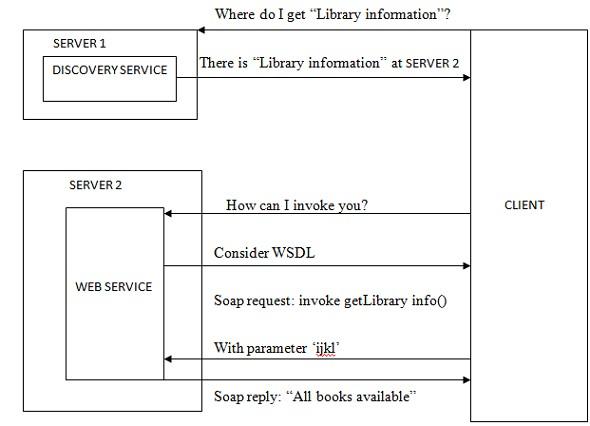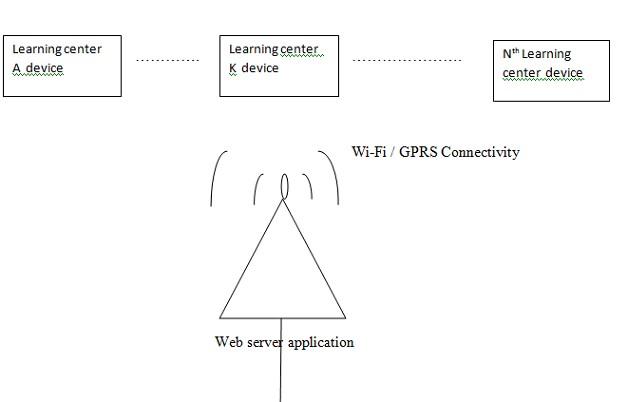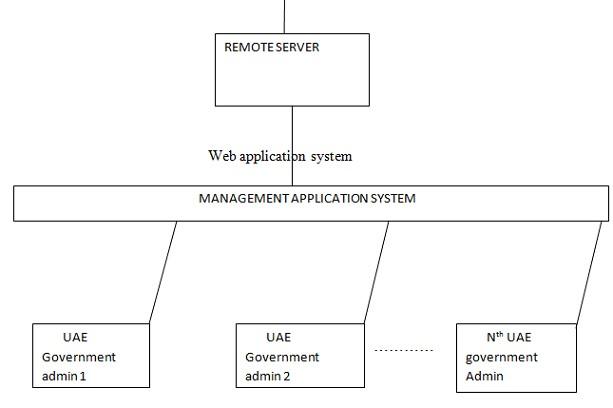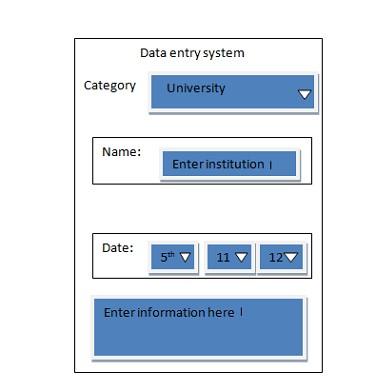
Technological advancement in mobile communication has revolutionized the world and it still holds the potential for further development. It is currently the world’s mode of transmitting information to millions of people across the globe. They are able to access services such as financial information, governance system, and market. M-apps are software specifically designed to seize the opportunities presented by the mobile technologies. After analyzing how the UAE government supervises and monitors universities’, colleges,’ and schools’ performance, we introduce a new technology that will employ android phones and web service to update the government of the activities going on at the learning institutions. The technology will digitalize government supervision and avail important information necessary for monitoring and evaluation.
Mobile phones are the right devices to further innovation due to their advantages in affordability, voice communication, wide ownership, instant service delivery, and convenience of use facilitated by their sizes. The world has witnessed an increase in mobile apps, each uniquely solving a problem in an attempt to up service delivery and make human life comfortable. The global explosion of the mobile apps has been enabled by the rapid and systematic evolution of networks and handsets affordability.
As the UAE devotes almost 25% of government expenditure to education, it is prudent to have an efficiency that would act as a catalyst to improve the overall literacy level from its current 90% to a higher rate. There is a need to digitalize the supervisory role in order to facilitate the realization of the adopted Education 2020 blueprint goals. This system will move the supervision from periodic event to a real-time process.
Information generation and efficient delivery must take center stage when analyzing factors of success. Policymakers must put strategies and define ways, through which an organization, government’s institutions, or ministries would receive timely and accurate information to guide their operations or activities effectively.
Putting these factors into consideration, a mobile application that can access remote database is designed. The system is Android based and it has the ability to grant a general solution to the state government to supervise and monitor all the activities, the performance of all the government agencies. At the same time, the system provides a platform where workers can directly engage the government officials without having to follow the tedious formalities and protocols for seeing a senior official. This system is designed to link public learning institutions and the UAE federal government.
To transform the government supervision on public learning institution and make it respond to problems as they arise for an immediate solution the system that is titled Mobile Application for Government Supervision on Learning Institutions is introduced. It will enable school administrations to communicate with the right departments and senior government officers when need arises. The government in turn will be informed on a 24-hour basis of all the occurrences, problems, and progress made in each center of learning. This way, the state will overcome the impediments and score even higher regionally.
This paper will focus on technological innovation that can revolutionize the way government collect information, monitor and supervise learning activities in UAE. The technology proposed is called mobile application.
This section looks at the current systems employed by the UAE government to obtain information it uses to monitors and evaluate performance of the entire education sector in the country. In 2009, the UAE government created education councils to decentralize the education system. The process involved merging educational zones and putting them under the management of ADEC (Abu Dhabi Education Council). It has implemented Enterprise Student Information System (ESIS) so that efficiency is introduced in the management of learning, teaching, and tracking students’ performance. The Ministry of Education incorporated School Information System (SIS) and sub systems that were two and four respectively to manage affairs of staff, students and manage the schools.
While the current system has restored effectiveness in the management of learning institutions, there is a missing link between the schools and the government in terms of information flow. A system is required to ensure information flows from the schools’ management to the government to aid decision-making and supervision. The current information system to some extent depends on visits by the government officials to collect information. This arrangement may delay results.
The mobile application proposed in this paper is a new technological venture that is applicable to schools, colleges, and universities. It is a monitoring tool designed to help the government of the UAE to have efficient knowledge of the daily activities and events that take place in schools. These events are of importance to the government in its bid to improve the education standards and raise the literacy level in the country.
By obtaining a rapport, through which schools, colleges, and universities inform the government of the progresses they make and hurdles they have encountered, the process of supervising and monitoring schools’ operations in the country is simplified. Information transmitted by the school administrators (Headteachers, Principals, and Deans) to the government through the proposed mobile application is end of term/semester performance, teachers/lecturers’ work report, eventualities such as accidents, objectively verifiable development indicators like schools’ AGM and resolutions made, learning facilities expansion, and example laboratory construction.
The information is loaded and transmitted to the government through the proposed mobile application on a daily basis as they occur, implying no event in a school or college will escape the government’s attention. This will ensure that the government is always up to date and it can easily strategize and implement development policies based on facts.
The mobile application has two categories of users – direct users and indirect users. The direct users consist of the government of the UAE, which is also the main beneficiary. The government’s task of visiting a learning institution in the process of supervising education is substantially reduced by the application as information is transmitted directly to the government offices. Schools are in the category of direct users. They are tasked with the responsibility of loading and transmitting daily occurrences in their respective centers, using the application. Finally, the citizens are the indirect users since the application directly changes their lives as the result of improved services offered to their children in schools by the government.
This part explains the accessibility of web service by the mobile application to get to the Remote Database Server (RDS). Web services use XML languages (Extensible Markup Language), making them both human and machine-readable. Web services are both language and platform independent. Most of them use HTTP (Hypertext Transfer Protocol) as a means to transmit messages and information.
Web service has a unique feature in that it has the ability to describe itself. Once it is located, the user can command it to provide a description of itself and display all the operations that are enabled in its system and how the user can invoke them. This function is carried out by the Web Service Description Language (WSDL). Invoking a web service entails an exchange of information the client and the server. For example, the Simple Object Access Protocol (SOAP) outlines how servers receive, interpret and configure the responses. It also specifies how the request is transmitted to the server.
Data from the mobile application to the web service is sent in the form of hypertext transfer protocol. To achieve this functionality, the Android mobile requires Wi-Fi connectivity or General Packet Radio Services (GPRS).

The target of the new system is to create a mobile application that enables monitoring and supervising the learning institution of the country and facilitate communication between the learning centers’ administrators and the education stakeholders. The daily activities in the schools, colleges, and universities are recorded. These data include teachers’ attendance, Continuous assessment Tests (CAT) results, end of semester/term results, main activities taking place in the centers such as sports, daily problems encountered or disasters that require immediate attention, and so on. The information is fed to the server using the mobile application. The center administrators such as Headteachers, Principals, and Deans would have handsets with the app installed and login details such as passwords for security. They will enter the data as contained in their registers or performance sheets (either written or photographed) and upload it.
The information in the mobile phone is transmitted to the remote database. The transmission of information is aided by the application of web service. Once the information gets to the remote database, the system projects it to a web application as Management information System (MIS) accessible by the government. Therefore, all the uploaded information from all the learning centers in the country is availed to the government for action where necessary.
This is the overall conceptual outline of the system that includes program structures, data structure, and how they are integrated to perform the defined task. The different components are designed to function by following signals that emanate from the client. Definition of data in terms of its flow from the mobile application to the remote database is also defined. The final data destination where it is seen as a web application in management information system outlined.


For the assembly and connection of the system, various electronic devices, and software are required. These applications are available on the shelf and are easily obtainable from the shop. They are as follows:
Latest Standard Query Language (SQL) server, latest Ms. Visual Studio, Operating System for an Android mobile, Windows 7, 8, or XP operating system, latest NET framework, Eclipse IDE (Integrated Development Environment) that has an extensible plug-in for customization. The net framework must have all the three components, the Framework Class Library, and the Common Language Runtime.
The system requires the latest version of the processor with at least 1 GB random access memory (RAM) fitted with network adapters. In addition, important is an 80 GB Hard Disc Drive (HDD) for internal storage. The school administrators should have phones with Android OS. These phones only need to operate an Android operating system. There is no specification for phone types, any smartphone type that has installed Android operating system is appropriate.
The system is made up of five units or modules. Each unit performs a specific task as directed and coordinated by the processor.
Each administrator at various schools, colleges, and universities across the country is issued with a unique name and specific number. The two data items serve as the password and username for the administrators. The design of the system allows capturing of specific information that uniquely identifies the administrator that logs in.
For instance, the system would record the geographical location of the learning institution in terms of longitudes and latitudes, the phone number as transmitted by the IP address, and its registration commonly referred to as IMEI. All the information is recorded and saved every time one logs in. This functionality ensures that information is only sent from the centers, that is schools, and not from anywhere else. It minimizes fraudulence and puts the schools’ head to the task of ensuring duty is not absconded.
The functionality of this module is initiated by government policy. It is recommended that once the system is implemented, performance policies must accompany its implementation so that every day, after service closure at schools, a report is sent. The report must contain data items that the UAE government requires for monitoring purposes. The information is entered through the Android application.
The administrators (schools’ and college heads) can navigate through their devices to specify which type of data they enter. Such data can be for example, an emergency event at school such as fire or accident, terminal or semester exam results, teachers/ lecturer attendance using spinner control. The spinner control ensures presentability of the entered data so that the government finds it easy to read the information.
The next event after loading the desired information into the Android application is invoking the web service. The Android application parameterizes the data before a communication is made to the web service. The mobile device connected to the Wi-Fi or General Packet Radio services transmit the data to the web service. The web service applications receive the signals from the Android applications. The information goes to the web service in parameters as coded by the android application. The signals then are transferred to the remote server.
The process is real time and it affects changes immediately. The time it takes to transmit parameterized data items from Android application through the web service to the remote server is short but may be dependent on the network strength. Stronger network would facilitate faster transmission speed, and a weak network may cause some delays, although transmission must take place even with a weaker network signal.
This unit decodes the transmitted information. It is the final destination where the UAE government receives the feedback from schools, colleges, and universities. The location of the workstation is determined by the location of the government headquarters. The unit consists of computers that receive the information from the remote servers and transforms the information to human-readable form. The operators of the computers are government officials who can communicate with the appropriate authorities for concerns that affect education and require immediate address by the state.
The information received by the remote servers is organized in a systematic manner that avoids confusion. Each work or report transmitted from schools is categorized so that all information that concerns results is put together but separated according to the origin, which is a source. The Management Information system arranges the information date-wise so that monitoring can be done with ease. It also simplifies interpretation as meaningful data items are seen at a glance.

The user would have to enter information as commanded by the device. Data entry is simplified in this system, as the device has to drop down menu that enables the user to select from the list. The drop down functionality minimizes human errors committed during entry.
The proposed Android Mobile Application system has great potential to solve some problems encountered in the management of schools by the government. As the government depends on data from schools to monitor performance, the system comes with the advantage of transmitting information on the real time basis. Adoption of this system is recommended to digitize information collection from learning institutions, hence improving on service delivery to the citizens. Future is bright for this system since it is possible to introduce more complex software that would enable the system to perform other tasks above the current functions. There is a possibility of redesigning the system to accept other versions of mobile operating systems. This would enable the expansion of the system in the sense that similar services can be extended to other levels of management. They may include agricultural sector, tourism sector, and irrigation and so on. In future, it is possible to integrate GIS to facilitate map display for easy location identification.
The proposed system is a new venture in the mobile technology. It has great potential to transform lives of students and the whole sector of education. The system attempts to provide a solution and simplify the government role of monitoring and supervising the education sector. It comes at the right time when the UAE is in the process of raising the literacy levels in the country.
The system will ensure that education standards in the country are monitored and that all sector players such as lecturers, teachers, and the institutions’ head are responsible and they deliver as expected by the law. It ensures that errand teachers who do not perform in their subjects are identified and dealt with according to the law. The system comes with the advantage of minimizing government expenditures as it limits the number of government’s visits to the learning institution. Such state funded visits are expensive as they involve significant logistics expenditures.
It is time policymakers strategized and defined ways through which organizations, government’s institutions, or private sectors receive timely and accurate information to guide their operations or activities effectively by embracing similar technologies. The mobile system is an implementable project that needs rolling in the country to streamline the education sector and encourage efficiency in all the UAE learning institutions. Information generation and efficient delivery must take center stage when analyzing factors of success. This system is geared towards offering such services that would ensure efficient and safe delivery to the intended recipient.
